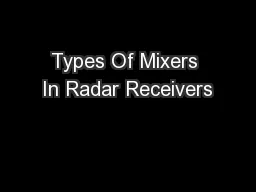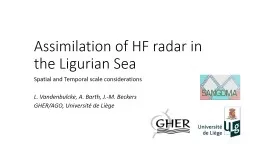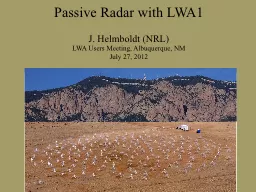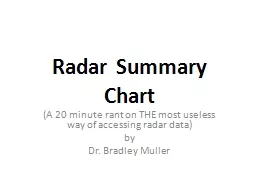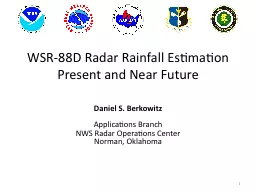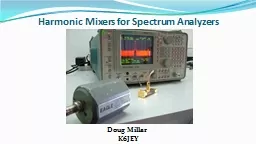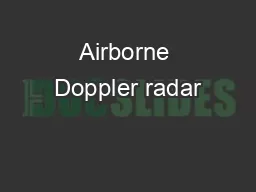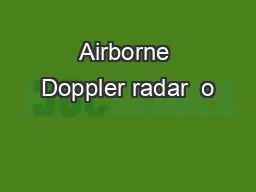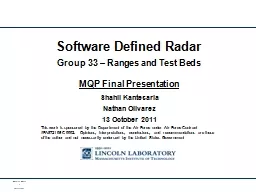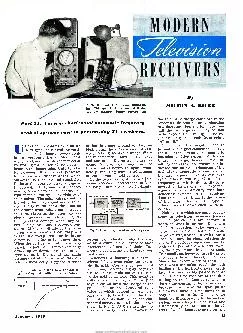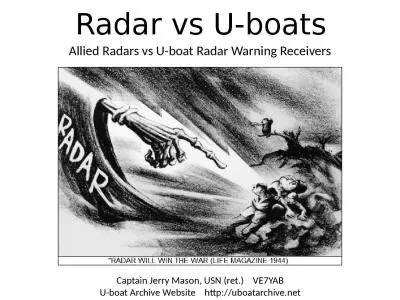PPT-Types Of Mixers In Radar Receivers
Author : kittie-lecroy | Published Date : 2016-06-01
Radar And Navigational Aids Jayaraman 1053 Kaushik 1059 Ikram 3009 Vignesh 3010 Mixer Converts the incoming RF Radio Frequency to IFIntermediate Frequency
Presentation Embed Code
Download Presentation
Download Presentation The PPT/PDF document "Types Of Mixers In Radar Receivers" is the property of its rightful owner. Permission is granted to download and print the materials on this website for personal, non-commercial use only, and to display it on your personal computer provided you do not modify the materials and that you retain all copyright notices contained in the materials. By downloading content from our website, you accept the terms of this agreement.
Types Of Mixers In Radar Receivers: Transcript
Download Rules Of Document
"Types Of Mixers In Radar Receivers"The content belongs to its owner. You may download and print it for personal use, without modification, and keep all copyright notices. By downloading, you agree to these terms.
Related Documents

